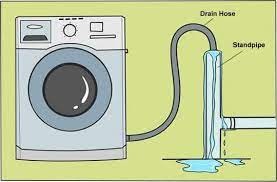Common Issues in Washing Machines
- Certainly, washing machines can experience a variety of problems.
- Here are some common issues that people encounter with washing machines and possible solutions:
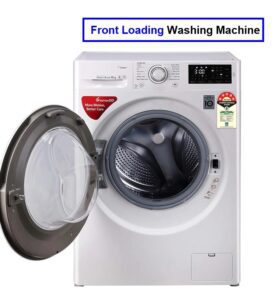
Machine Not Starting:
- Check the Power: Ensure the washing machine is properly plugged in and receiving power.
- Door/Lid Switch: In front-loading machines, a faulty door switch or in top-loading machines, a malfunctioning lid switch can prevent the machine from starting. Replace if needed.
- Timer or Control Board: If the control panel or timer is malfunctioning, it may need to be replaced.
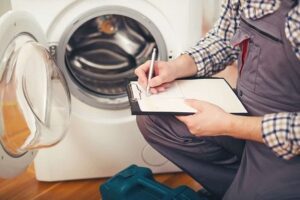
Machine Not Draining:
- A washing machine not draining can have multiple causes
- This means pipes are a clogged or jammed drain hose or a broken pump, lid switch, or belt.
- You should drain the water from the washing machine before diagnosing the issue or doing any work to remedy the situation.
Machine Not Agitating or Spinning:
- Load Balance: Unevenly distributed laundry can prevent the machine from agitating or spinning. Ensure the load is balanced.
- Drive Belt or Motor: A broken or worn-out drive belt or a malfunctioning motor can cause these issues. Inspect and replace if necessary.
- Lid Switch: In top-loading machines, a faulty lid switch can also prevent agitation and spinning.
Machine Shaking Excessively:
- Make sure the machine is level and on a stable surface.
- Check that the load is balanced. Overloading or underloading the machine can cause excessive shaking.
- Inspect the shock absorbers and suspension springs for damage and replace if needed.
Unusual Noises:
- Noises like grinding, banging, or squeaking can be caused by worn-out bearings, belts, or foreign objects stuck in the drum.
- Inspect and replace the affected parts.
Water Leaks:
- Check for loose hose connections and tighten them if necessary.
- Inspect the door seal (if applicable) for damage or debris. Replace if needed.
- Ensure the detergent drawer is clean and properly closed.

Foul Odors:
- Run a hot water cycle with vinegar or a washing machine cleaner to remove built-up residue and odors.
- Leave the door or lid open after each use to allow the interior to dry out and prevent mold growth.
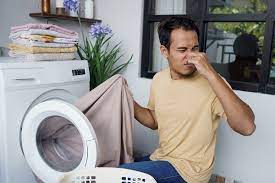
Error Codes:
- Modern washing machines often display error codes.
- Consult your machine’s manual to understand and address specific error codes.
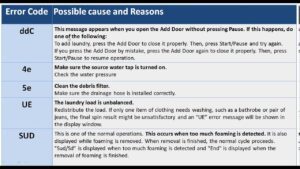

Not Dispensing Detergent or Fabric Softener:
- Clean the detergent and fabric softener compartments thoroughly. They can become clogged with residue.
- Ensure the water supply to the washing machine is adequate.
Overheating or Not Heating
- Check the heating element or thermostat for faults and replace them if necessary.
- If you’ve tried troubleshooting and the problem persists, especially if your washing machine is still under warranty, consider contacting the manufacturer’s customer support or a professional appliance repair technician for further assistance or repairs.
Washing Machine Drainage Problem
Certainly, here are some common solutions to washing machine drainage problems:
Check the Drain Hose:
- Make sure the drain hose is properly connected to the drain standpipe or outlet.
- Ensure it’s not kinked, twisted, or blocked. If the hose is too low, it can cause water to siphon back into the machine.
- If it’s too high, it might not allow proper drainage.

Clear Blockages:
- Inspect the drain hose, pump filter, and pump for blockages.
- Lint, debris, and small items can clog these components. Disconnect the hose and clean it out if necessary.
- Some machines have a removable pump filter that should be checked and cleaned regularly.
Check the Drain Pump:
- Clogged drain pump
- might be clogged or malfunctioning.
- Consult your washing machine’s manual for instructions on how to access and clean the pump.
- If the pump is damaged, it may need to be replaced.
- Drain Height:
- Ensure that the drain hose is at the correct height.
- There’s usually a recommended height in the user manual. If the hose is too low, water might flow back into the machine.
- If it’s too high, it might not drain properly.
- Check for Siphoning:
- If the drain hose is positioned too far into the standpipe, it can create a siphoning effect that prevents proper drainage.
- Make sure there’s an air gap between the hose and the standpipe.
- Check the Standpipe:
- The standpipe or drainpipe the washing machine drains into might be clogged.
- Insert a plumber’s snake or a wire to clear any blockages.
- Lid Switch (Top-Loading Machines):
- If you have a top-loading machine, the lid switch might be faulty.
- The machine won’t drain if the lid switch isn’t functioning properly.
- Consider replacing the switch if needed.
- Error Codes:
- Check if your washing machine is displaying any error codes.
- Look up these codes in the user manual to diagnose the specific issue.
- Gravity Drain:
- If the drain hose is too low, it can cause the water to flow back into the machine.
- Elevate the hose to allow gravity to help with drainage.
- Professional Help:
- If you’ve tried these solutions and the problem persists, it might be best to consult a professional appliance repair technician.
- They can diagnose and fix more complex issues with the machine’s internal components.

